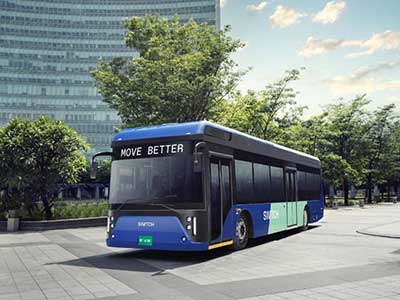Date: 24/11/2022
Relevance: GS-3: Conservation, Environmental Pollution, and Degradation, Environmental Impact Assessment.
Key Phrases: Electric Buses, e-buses, Convergence Energy Services Ltd (CESL), carbon markets, carbon credits, payment security fund, Compliance market, voluntary market, Sustainable public transportation, zero-emission transport.
Why in News?
- India’s first tender for electric buses, which resulted in orders for 5,450 of them, has made the world sit up and take notice because no other country has bulk-ordered these many.
- One of the latest initiatives on this front has been Convergence Energy Services Ltd (CESL)’s USD 10-billion tender for 50,000 electric buses to drive India’s plans to decarbonize public transport and help meet its goals for net zero emissions.
Payment Security Challenge:
- At a conference in the India pavilion at COP27, many experts mentioned ‘payment security’ as the single biggest risk in bidding against e-bus tenders.
- Against the backdrop of the poor financial health of the state transport undertakings, the big concern is what if the STUs don’t pay up. And that is where carbon markets enter the frame.
- One solution to the issue of payment security is to sell carbon credits and put them into a payment security fund.
Carbon Credits:
- According to some experts, each bus would potentially get 22 carbon credits per year because e-buses save carbon dioxide emissions that would have otherwise happened from diesel buses.
- In the ‘voluntary market’ (where companies such as Google, Apple, and Shell volunteer to buy carbon offsets to meet their own net-zero emissions targets), each carbon credit could sell for $10. Each bus could earn about ₹18,000 a year.
- The idea is to put this money into a fund, which could pay the e-bus operator in case the STU failed to pay.
- Last year, the International Monetary Fund recommended that the price for a carbon credit should be $75 if global emissions should come down as required.
- Therefore, carbon credits from e-buses could earn more robust sums, nourishing the possible ‘payment security fund’.
Carbon Credit:
- It is one of the most commonly used legally tradable certificates to offset greenhouse gas emissions.
- One carbon credit is one metric tonne equivalent of carbon dioxide reduction or absorption from the environment.
- In the context of EVs, carbon credits are generated by replacing fossil fuel-based vehicles with electrified vehicles that have significantly lower emission levels and source electricity from renewable energy projects or less carbon-intensive fuels.
Evolving Compliance market:
- Governments could be a big purchaser of carbon credits. The market segment in which the buyers are under an obligation to buy carbon credits is called the ‘compliance market’ (as opposed to the ‘voluntary market’, where the buyers purchase credits voluntarily, without being obliged to do so.)
- The compliance market is still evolving, as the rules for it have just been hammered out. In the compliance market, the credits would sell for much more.
Role of Renewable Energy:
- The ‘22 credits per bus per year’ calculation is if the e-bus batteries are charged with conventionally generated electricity.
- Each bus could earn 55-60 carbon credits if they are charged with renewable energy-generated electricity.
- That would make e-buses more attractive not just environment-friendly-wise but also financially.
Private players catch up with the trend:
- In terms of the private e-bus market, the pace is picking up, with private operators showing keen interest in electric buses, given the lower total cost of operations and sustainability commitments.
- The future for the private electric bus market looks promising, as 2025 and beyond, the market share for private e-bus orders is expected to be about 70%.
- As companies look at staff transportation with electric buses as part of their shift to sustainable transportation in the near-term, employee movement will drive the growth for e-buses in the private segment.
- Private strategic collaborations for the deployment of electric buses across India will accelerate the adoption of clean, sustainable electric transportation solutions.
Way forward:
- By 2030, the Indian economy is expected to be one of the fastest-growing economies in the world, coupled with a growing population and one of the lowest bus fleets per capita in the world.
- Sustainable public transportation through E-buses will be the need of the hour.
- The switch to e-bus presents the opportunity to convert the maximum passenger kilometre of travel to zero-emission transport in Indian cities and has the potential to yield a variety of benefits such as improved energy efficiency and air quality, along with longer-term climate change mitigation benefits.
- Electric double-decker buses will also contribute to reduced urban space footprint and will help cities grow, in a sustainable way.
- The role of carbon credits needs to be effectively studied to fulfil India's commitment to decarbonization and to steer development towards green growth. This would allow India to meet its goal of achieving green growth.
- In India's effort to electrify the transportation industry using cutting-edge technologies and increase the amount of foreign direct investment it receives, only an increase in the number of carbon credits generated by the EV ecosystem could be helpful.
Source: The Hindu BL
Mains Question:
Q. How can a robust carbon credit mechanism for e-bus transportation help India achieve its commitment to decarbonizing public transport? Discuss.







